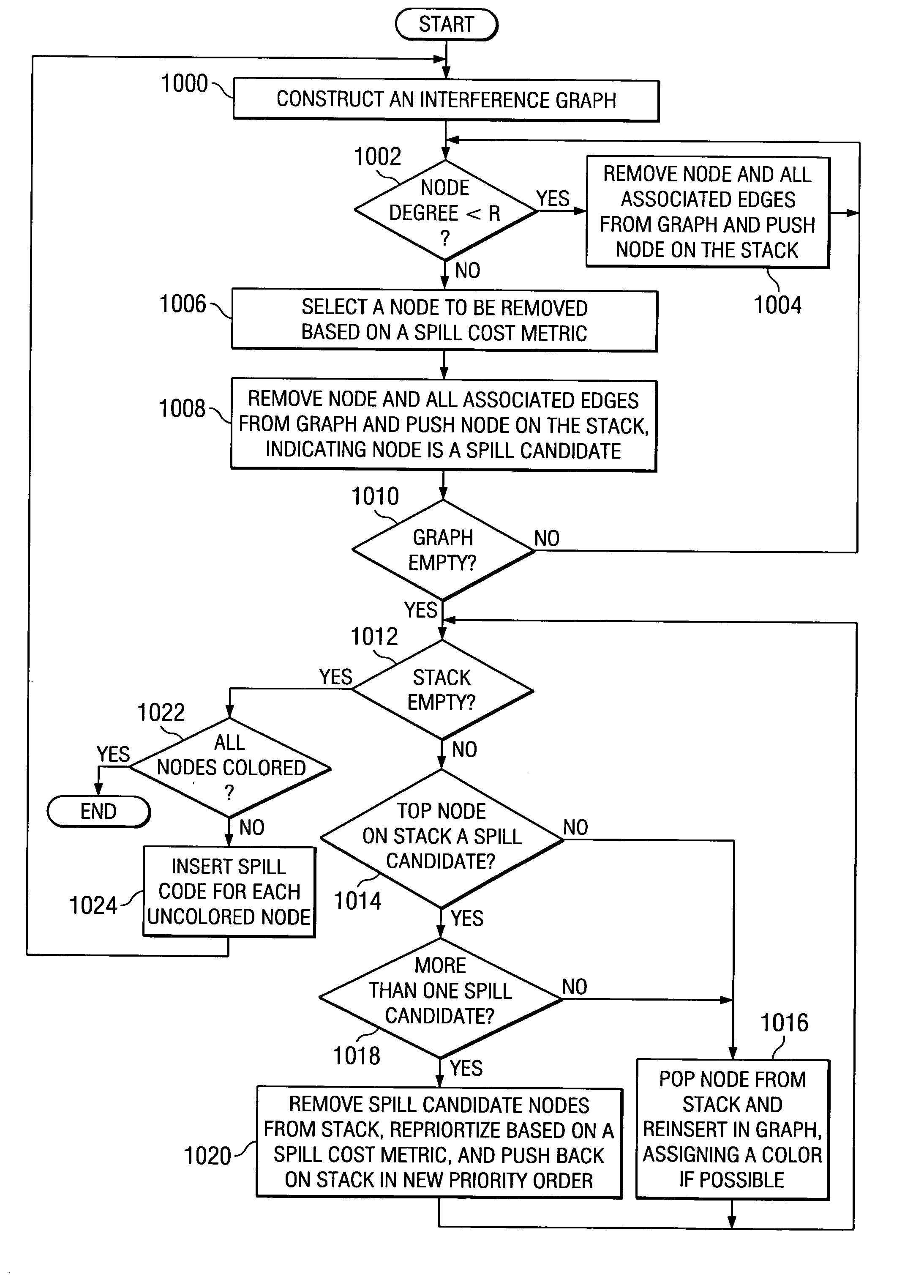Register allocation and code spilling using interference graph coloring
a technology of graph coloring and register allocation, applied in the field of software development, can solve problems such as np-complete problems, reduced execution efficiency, and reduced execution efficiency, and achieve a minimal graph coloring
- Summary
- Abstract
- Description
- Claims
- Application Information
AI Technical Summary
Benefits of technology
Problems solved by technology
Method used
Image
Examples
Embodiment Construction
[0016]FIGS. 1A and 1B together present a flow graph of an improved register allocation method. The method presented is an improvement of the optimistic register allocation method described in detail in U.S. Pat. No. 5,249,295 issued to Preston P. Briggs, et. al., which is incorporated herein by reference. At step 1000, an interference graph is constructed. The interference graph is then simplified as illustrated by steps 1002-1010. First, as illustrated in steps 1002 and 1004, all nodes with degree less than R, where R is the number of registers available for allocation, are removed from the graph in arbitrary order and pushed on a stack. The edges of these nodes are also removed. Note that when each node and its associated edges are removed from the graph, any nodes remaining in the graph to which the removed node was connected by an edge is reduced in degree. If there is no node with degree less than R (step 1002), then, at step 1006, a node is selected for removal based on a spil...
PUM
 Login to View More
Login to View More Abstract
Description
Claims
Application Information
 Login to View More
Login to View More - R&D
- Intellectual Property
- Life Sciences
- Materials
- Tech Scout
- Unparalleled Data Quality
- Higher Quality Content
- 60% Fewer Hallucinations
Browse by: Latest US Patents, China's latest patents, Technical Efficacy Thesaurus, Application Domain, Technology Topic, Popular Technical Reports.
© 2025 PatSnap. All rights reserved.Legal|Privacy policy|Modern Slavery Act Transparency Statement|Sitemap|About US| Contact US: help@patsnap.com


